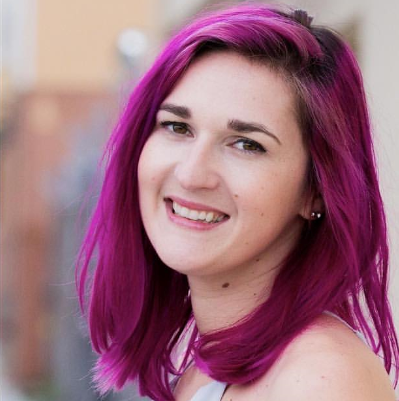
Kenna Cook
Bisexuality has had to fight for its place to be noticed in American culture for the last 45 years.
Bi people were the easiest liaisons between the heterosexual and homosexual communities. You could walk in both worlds, but oftentimes don’t feel connected to either. This is bi invisibility.
Even if the running joke of bisexuality is that we will “choose one side eventually,” homophobes don’t half-hate bisexuals. They don’t want to half-take-away our rights to freedom from discrimination and violence. The fight for gay rights is the fight for the freedom of all sexualities.
Part of the reason the term “bisexual” has been the hidden and often ridiculed stepchild in American sexual culture is that the word has SEX right in the title. “Gay” and “Lesbian” are more palatable terms because the conservative, homophobic, vanilla masses don’t have to think about all the HOT HOMO SEX we are having–even though studies show that heterosexual folks on average fantasize more about homosexual sex than homosexuals do.
The word “queer” started to gain popularity during the 70s as a way to be more inclusive of orientations beyond gay and lesbian, but its further reaching effect was more bi-invisibility. Most bisexual people identify as queer, since it’s the easiest way for them to tell other people that their ideologies and lifestyle are either very different or very similar to theirs. I claim the word queer in mostly heterosexual spaces because I’ve been fetishized by straight men as a bisexual woman. Bi women are more likely to be sexually harassed than any other demographic.
Sex is complicated and sexual orientation is complicated. And figuring out what to call your sexuality is even more complicated.
Now there are words for every type of orientation configuration you can think of. Demisexual, sapiosexual, greysexual, aromatic, asexual. And then there’s pansexual. This is an identity that the bi community has largely not accepted because they see pansexuality as a means to make bisexuality more invisibile.
“How did you arrive to identify as pansexual? Was it through a portal that denigrates bisexuality? And if so, do you hold the idea that bisexuality enforces a binary structure of gender and sexuality that extinguishes your own non-binary identity?” These are the questions at the center of the bi/pan conflict.
In our small queer community of Sacramento, two groups exist to serve the polysexual–that is, someone attracted to more than one gender–community: AmBi and the Pansexual Pancake Breakfast. Laying all my cards on the table here, I am the founder and facilitator of the Pansexual group. I am biased as fuck.
When I first came out socially as bisexual in 2015, I was desperate for community. I scrolled through Meetup and found that amBi was celebrating Bisexual Visibility Day on September 23 at a small Bavarian pub. I walked in with my heart in my throat and my freshly-dyed Smurf-blue armpits raised proudly as an outward signifier of my newly embraced queerness. This was the very first time I said out loud to a group of strangers, “I’m bisexual.” It was fucking mind-blowing. It was also the first time I had heard men identify publicly as bisexual and “heteroflexible” before.
That next year, my kids and I marched along with amBi in the Sacramento Pride parade, right behind the gigantic blue, pink and purple fabric of the bisexual pride flag. But what I noticed about amBi is that it was serving an older demographic of bisexuals. Folks that were my parents’ age. I also didn’t see many trans or gender-nonconforming folx. So I continued to search for a place where I felt like I wasn’t straddling the line of my generation and the last. And I found the term “pansexual.”
It fit. It felt good. And most of the people that I saw using it were using they/them pronouns, had multi-colored hair and were generally sex positive. My people!
Carol Queen, the founder of the Center for Sex and Culture, Good Vibrations’ sexologist-in-chief, and the most badass bisexual in all of San Francisco since 1977, was throwing pansexual play parties in the early 80s after Diane Feinstein shut down sex during the AIDS epidemic. These parties welcomed people of all genders and all orientations to come out of hiding and learn how to enjoy sex again. She has described pansexual as being used to identify in two main ways: #1 as a form of sexual exploration–or a “trysexual” who will try it all—and #2 as being open to experiencing intimacy in the most expansive terms.
Yes and yes. According to the gospel that is Saint Carol Queen, I’m a 100 percent, grade-A pansexual princess.
But the bisexuals don’t like us pansexuals much. They see our crusade as one that is diluting the fight that they have been battling for decades. The visibility of pansexuals is in direct relation to the continued invisibility of bisexual. I personally have tried to get people from amBi to come to the Pansexual Pancake Breakfast at the Sacramento LGBT Community Center every second Sunday of the month. Those seats have stayed empty.
I asked Carol Queen recently at CatalystCon how I could bring our two communities together. We have skin in the same fight. We are part of the same rainbow family. How can I dissolve the dissonance between us?
“Share a meal together. You bring the pancakes, they can bring the toppings.”
I listen when Carol Queen speaks. Let’s find neutral ground and come together, amBi. My griddle is waiting for you.







